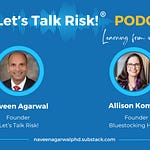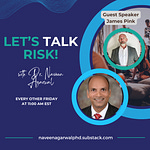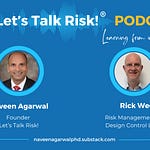Summary
“Apply the usability engineering process diligently, and with the spirit of inquiry. You will learn things that you never thought. And these are the things that make your device possible”.
Human factors engineering, or usability engineering, is often thought of as a check-the-box activity for the purpose of regulatory compliance. But it is a lot more than that.
In this episode, Chris Whelan delve into the nuances of Human Factors and Usability Engineering. He shares insights from his extensive experience, emphasizing the significance of learning early and learning fast through formative studies early in the design phase, and being open to adjusting your design assumptions.
The discussion also touches on Chris's career journey and the importance of continuous learning in professional growth.
Chapters
00:00 Introduction to Chris Whelan
05:49 Understanding Human Factors vs Usability Engineering
12:37 The Importance of FDA Guidance
15:53 Best Practices in Human Factors Engineering
24:33 User Representation in Usability Studies
32:17 Addressing Misuse in Risk Analysis
34:48 Career Reflections and Professional Growth
Suggested links:
FDA guidance - Applying human factors and usability engineering to medical devices, issued February 2016.
FDA guidance: Content of Human Factors Information in Medical Device Marketing Submissions, issued December 2022.
IEC 62366-1:2015/Amd 1:2020 - Medical devices - Part 1 - Application of usability engineering to medical devices.
IEC/TR 62366-2:2016 - Part 2: Guidance on the application of usability engineering to medical devices.
Key Takeaways
Human Factors and Usability Engineering are closely related fields.
Following the FDA guidance and/or IEC 62366 is essential for successful products.
Engaging with a diverse user group enhances usability testing.
Iterative user testing can reveal critical insights for design.
Understanding user behavior is key to effective product design.
15 users is a recommended minimum for usability validation.
Continuous learning is essential for career advancement.
Real-world user feedback is invaluable for product success.
Addressing foreseeable misuse is vital in risk management.
The ultimate goal is to ensure the patient can receive the benefit, which mean usability and ensuring HCPs have access to it via successful market authorization.
Keywords
Human Factors, Usability Engineering, Medical Devices, FDA Guidance, IEC 62366, User Experience, Risk Management, Design Process, User Testing, Healthcare
About Chris Whelan
Chris Whelan is currently the New Product Development Manager at ITL BioMedical where he leads multiple global engineering teams. He has over 20 years of industry experience in medical device design, engineering and project management, as well as teaching experience at a university. Other areas of expertise include design controls, usability engineering and risk management. He holds a Bachelors in Industrial Design from the University of Technology, Sydney, Australia.
Disclaimer
Information and insights presented in this podcast are for educational purposes only. Views expressed by all speakers are their own and do not reflect those of their respective organizations.











